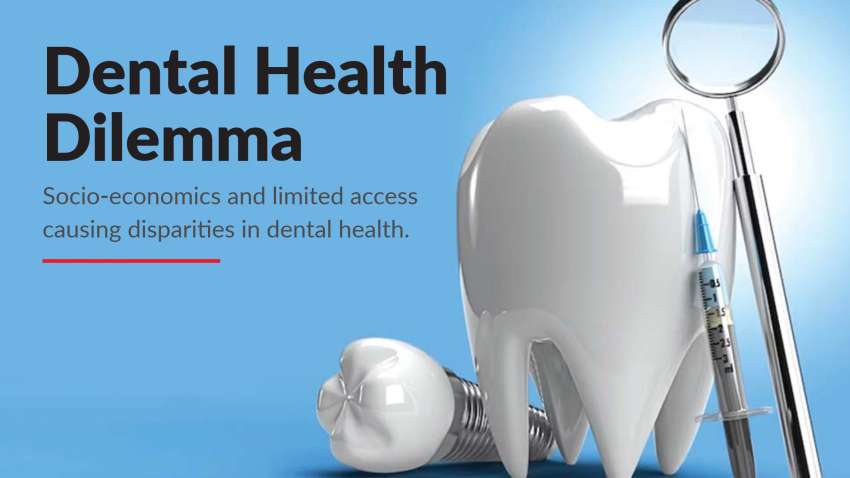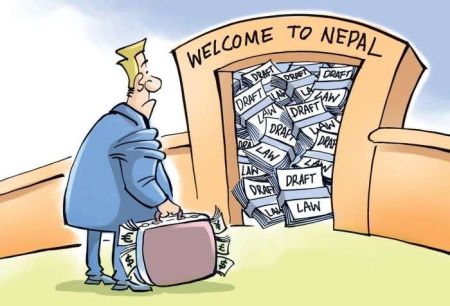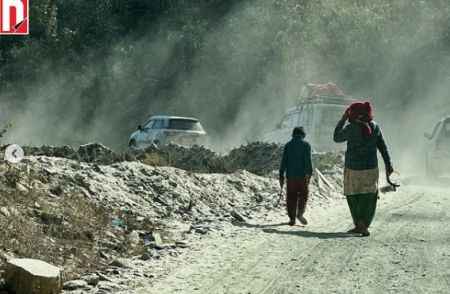Rajan, a 35-year-old farmer in rural Nepal, sought help at a local health centre as he was suffering from severe tooth pain and bleeding gums. Having never visited a dentist before, he was referred to Kathmandu for a scan specifying dental caries as the underlying issue. The dental team identified the cause allowing for targeted treatment to alleviate his prolonged discomfort.
Dental caries affect individuals of all age groups, but children are more susceptible to these issues, dentists say. However, adults are also vulnerable to dental caries, especially in rural areas, due to a lack of awareness regarding oral hygiene practices and the importance of oral health.
"It is generally seen that adults in the 30-45 age group mostly have gingivitis or a localised form of periodontitis, whereas the elderly population has a generalised form of periodontitis and either partial or complete edentulism (which means either partial or full tooth loss)," said dentist Parmesh Jung Thapa.
The Nepali population is affected by complex oral health diseases that impact the oral cavity. However, among the numerous diseases affecting the oral cavity, the most prevalent, as observed by dentists in their daily practice, are various periodontal diseases and malocclusions alongside dental caries. Some other issues include various oral lesions like ulcers, tumours, and cancers of different origins, Thapa added.
Dentists share that not maintaining oral hygiene properly is the most common cause of dental issues. Likewise, the lack of oral health awareness in rural areas, and dietary factors like eating foods containing refined sugar and high carbohydrate content are the major causes of such problems.
With the exponential rise in the consumption of refined foods in Nepal, among both children and the elderly, the incidence of dental caries has been rising in urban areas. Habitual factors like smoking, chewing tobacco and areca nuts, followed by systemic conditions like diabetes, hypertension, and Vitamin D deficiency, are also related to dental problems, shared Thapa. Meanwhile, patients undergoing radiotherapy and chemotherapy also suffer from dental illness.
Most dental problems are preventable. But it is common in our subcontinent to ignore these issues until they cause severe discomfort or pain. “This is why having annual dental checkups can help detect these issues early, and the progression of the disease can be prevented,” Thapa added.
Dentists share that the treatment of dental caries depends on the severity of the lesion.
According to Sanjay Gupta, a dental specialist, if the decay is only limited to the outer layers of teeth (the enamel and dentin), the decay can be cleaned, and it can be filled. “But if the decay persists beyond the dentin and into the pulp of the tooth, the tooth needs to be treated endodontically, which is commonly known as RCT (Root canal treatment),” he added.
Likewise, the treatment of periodontal diseases also depends on the type and severity and may include scaling and root planing, curettage, or different types of gum surgeries, said Thapa.
Dental care is regarded as one of the most neglected aspects in human health and does not get its fair share of attention from most people in our country.
While several factors affect our dental health, cultural practices also impact dental health negatively. Many believe that it is not appropriate to brush your teeth during pregnancy. “Such misunderstanding eventually causes pregnancy-related gingival enlargement, bleeding gums, and sometimes severe toothache during pregnancy due to dental caries,” Thapa added.
Similarly, practices of chewing areca nut (pan supari) in the Terai region cause severe wearing down of teeth and precancerous lesions like oral submucous fibrosis. However, the traditional practice of rinsing the mouth immediately after eating helps prevent food lodgment in interdental areas which can reduce the incidence of dental caries among Nepalis.
Talking about the dental health infrastructure in Nepal, Kathmandu, the capital city, houses the best and the most advanced dentistry on par with international practices. However, the sad part is that these services are limited to private practices in the city.
“There is an enormous amount of effort to be made nationwide to make these services available to everyone,” said Thapa.
Dentistry is very much accessible in urban areas today with lots of dental clinics. But the situation in rural areas remains unchanged. Moreover, the majority of dental practices are private practices with very limited government dental setup and manpower. This has created a major vacuum in terms of oral health in rural areas where the only services people rely on are government hospitals or primary health centres.
Awareness and access to oral health remains limited in rural areas which contributes greatly to the rise in dental caries and periodontal diseases. Therefore, there is a need to establish primary dental care setups in collaboration with the local government to maximise outreach and integrate government hospitals with highly trained doctors and technologies. “Revising the conventional curriculum in dentistry and encompassing digital dentistry like other countries in the world is also crucial,” Thapa said.
In the meantime, dentists point out that individuals, like Rajan, suffer in Nepal due to the socio-economic barriers to accessing dental and overall oral health. Socioeconomic status is noted as one of the paramount factors affecting access to oral health in Nepal.
Dental care is regarded as one of the most neglected aspects in human health and does not get its fair share of attention from most people in our country. Hence, most individuals are presented to the OPDs with severe conditions rather than for normal assessments. “This mostly leads to treatments that have higher costs on the spectrum, and hence comes the question of affordability,” said Thapa.
Furthermore, limited government dental services and almost non-existent dentistry in the rural areas of Nepal make it more challenging. Due to this, the upper strata of the society have better access to specialised and excellent dental care, while people from rural areas and low socio-economic status continue to suffer.






















